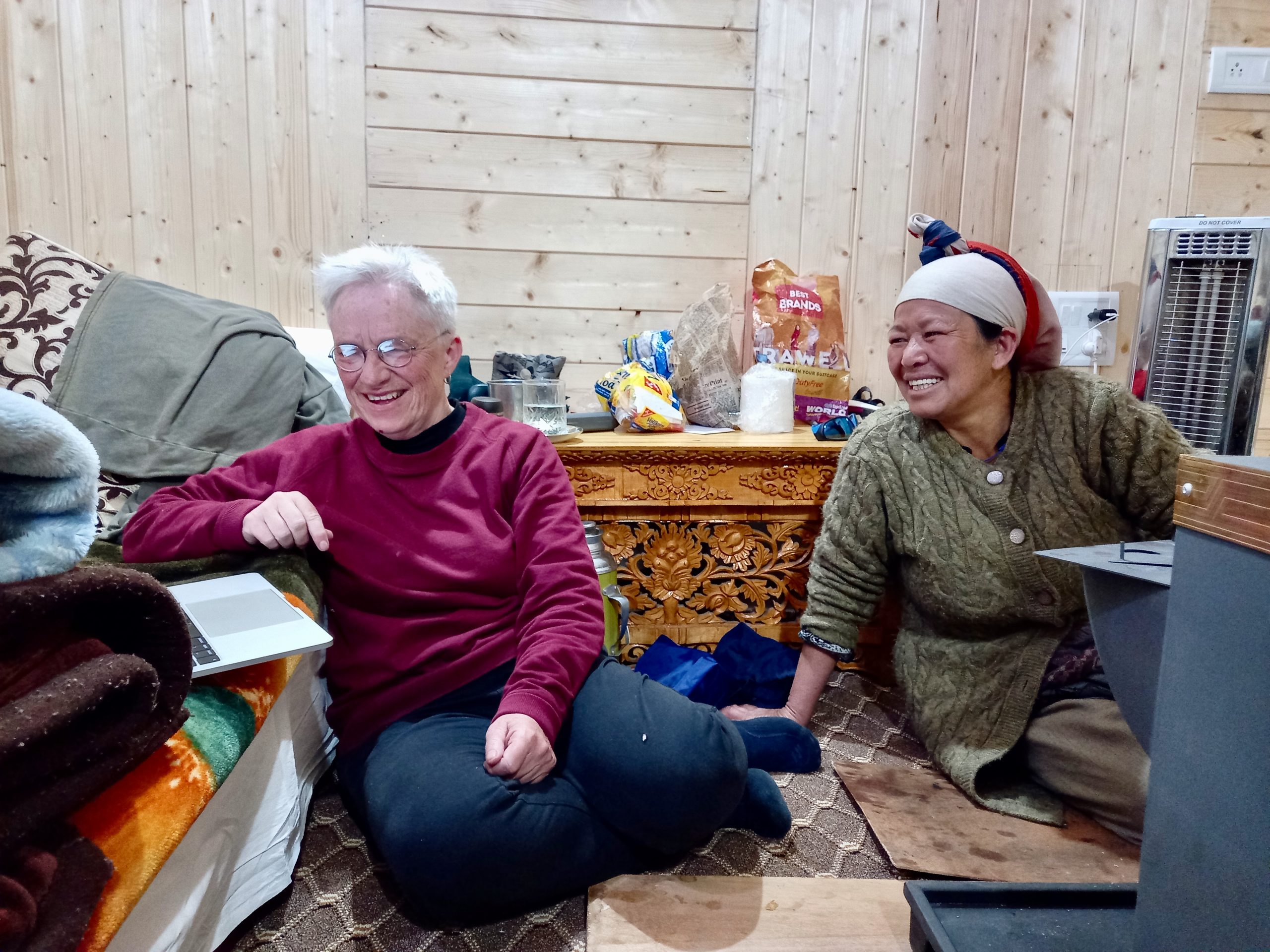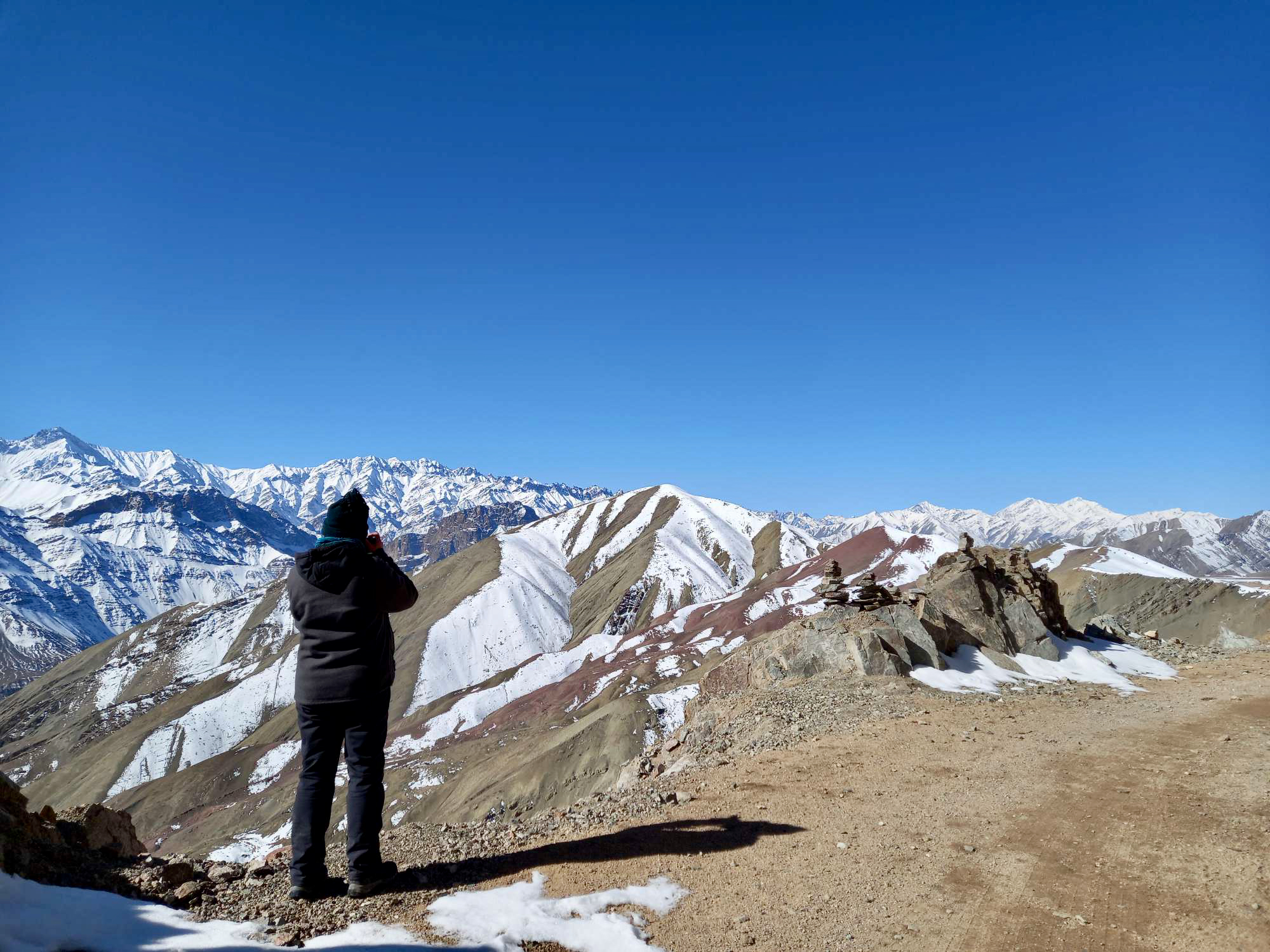Ladakh in winter – Afterthoughts
4. March 2023

It was a bit strange to write blog about my time in Ladakh as it was my 8th time there in winter. Usually there is more of a narrative need when something is new and I think others might be interested in my info too. But now I suspect that many who read my blog have known me for a while – and thus also Ladakh and possibly even the winter there. Maybe sometimes it was a bit sparse what I provided in terms of info, on the other hand I then had the feeling of repeating myself. Well then.
Actually, the afterthoughts blog post should mainly contain pictures of me – but stupidly I only get most of them later (maybe I’ll replace them then). Somehow it’s difficult with the mobile phones and the SIM cards – sometimes you can’t receive any mails via the SIM card and only get them when you have wi-fi (in my case), sometimes you can’t send any photos (in Eva’s case). At least it turned out that the SIM card I bought in Ladakh also works in the rest of India.
 Dosmoche in Leh
Dosmoche in Leh
But now, finally, some kind of summary. Compared to my previous winter stays in Ladakh, this one was the warmest. I often walked around outside without a cap, whereas I used to wear it a lot indoors before. This was especially noticeable when I went to the toilet in the courtyard at night – I didn’t even put my warm jacket on over my pyjamas. It was sub-zero, but not so freezing cold.
It was interesting that Eva and I stayed in a guesthouse where the room was nicely heated with a stove in the evening. We went outside to go to the toilet and next door to wash with a bucket of hot water every few days. My clientele was in a hotel with an attached bathroom with a flush toilet and heating, but it was only turned on when there were about 5 occupied rooms and without the other rooms they got extra heaters (which produced more of a tepid heat). The restaurant was not heated, so they had to eat in their rooms. Now they didn’t find that so pleasant. Years ago I was with a group in a heated hotel, which had good warm rooms, but also somewhat limited bathroom use and unheated restaurant (but was not scary cold there).
The homestays are different, there are some with heat sources in the room, some without. But you often sit there with the family in the winter room anyway, where it is rather warm because of the cooking stove. Only the toilet situation is always outside. So it’s a bit uncomfortable for night peeers.
Conclusion: not as warm as at home, but somehow doable.
 simple Homestay
simple Homestay
 comfortable guesthouseroom
comfortable guesthouseroom
I was a bit confused by the closed pass to the Nubra Valley for several days. This is an important route for the army and I assumed that it would be closed for 2 days at most. I wasn’t really aware of the avalanche danger, so you have to calculate differently for travellers. And that’s despite the fact that there are now also heated hotels there.
Overall, I had the impression of far fewer tourists than before Corona. Especially the Indians seemed to be much fewer – maybe because the Chadar was no longer accessible due to the “warm” weather. Or maybe some of them were looking for snow leopards. I don’t know if the snow leopard multiplies or comes down further, or if the locals are more skilled, experienced and successful at sightings – in any case, many were very happy to have seen several at once. Wolves and other wild animals are very easy to spot in the Changthang, but the accommodation conditions are (still) lousy. You can rent a “house”, which has been abandoned for the winter, at Tsokar and bring a lot with you, but it is still very cold and very basic. But maybe it’s a good thing that it doesn’t cause more people to jump around.
 Black Neck Cranes not in Changthang
Black Neck Cranes not in Changthang
For me, the most important thing was to meet again the people I hadn’t seen for at least 4 years. And that was all very good. In winter, people usually have more time and it’s easier to meet for conversations. Not everyone I met I mentioned in this blog. And with all of them it was really a linking up with earlier, familiar feelings and conversations. And a general togetherness, which I like.
What I found new was the large number of young people in Leh who met in public to date and so on. You hardly ever saw that in the past. They were either sitting around in mixed groups or sometimes in twos – with both of them staring intensively at their mobile phones (probably out of embarrassment).
The developments are definitely exciting, which are not only reflected in the change in tourism towards Indians in the summer, but also in the separation from the state of Jammu & Kashmir into a separate Union Territory. It is interesting, for example, that before you could “buy” your driving licence – now you can’t, you really have to go through the exams. I still don’t quite get it, but the new status means that even non-Ladakhis can now buy land. There is great apprehension of investment in mines for mineral resources. The 6th Schedule could help against this, which makes the Ladakhis worth protecting and with which they would have more rights. They are fighting for that right now.
Water is and remains a problem. These public water dispensers are new to me, but they did not work in winter.
 Water supply
Water supply
My conclusion for travellers: Ladakh in winter is definitely worth it! It is getting more and more comfortable, but it still has very little tourism compared to summer, great colours, beautiful festivals (besides the monastery festivals also Losar) and good village life. And even though more and more Ladakhis travel to the south, there are still enough to visit. For me, it remains the preferred time to travel – only this time I missed the trekking. You can hike in the Sham Valley, but the other more remote routes are just too cold and snowy.
 Look-through-photography in Shey
Look-through-photography in Shey
 landscapephotography
landscapephotography
And then I travelled to Delhi and from there to Nepal and how it continues there, you can read in this Blog:
